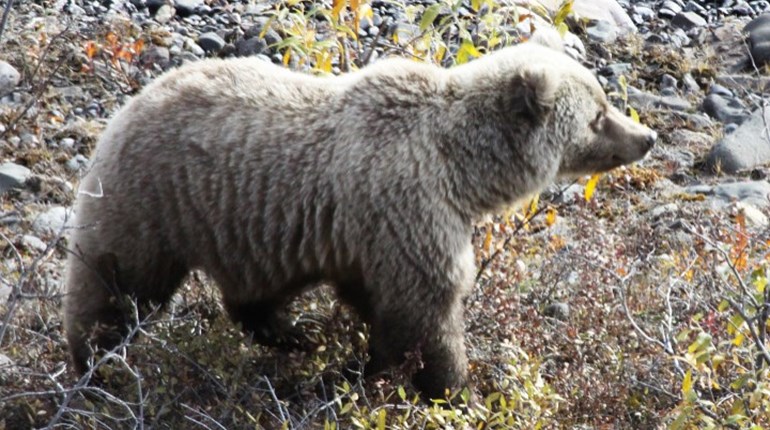
On August 25, 2016, the National Park Service marked its 100th anniversary. In celebration of “America’s Best Idea,” NRA Family has highlighted one National Park per month during the entire year. This last month of the year, December, it’s Badlands National Park.
Located near the center of the Northern Great Plains in South Dakota, the Badlands got their name from the Lakota Sioux Tribe of Native Americans who live in the region yet today. They called it Mako Sica, which translates simply into “land bad.” Extreme temperatures, lack of water and exposed, rugged terrain led to the name. During the early 1900s, French-Canadian fur trappers called the Badlands “les mauvais terres pour traverse,” or “bad lands to travel through.” You get the idea…
Today, the terrain of Badlands National Park has changed little from those early years. Stark, rugged geologic deposits contain one of the world’s richest fossil beds, attracting more than one million visitors annually. Ancient mammals such as rhino, horse and saber-toothed cat once roamed here. The park’s 244,000 acres also protect an expanse of mixed-grass prairie—the largest in the U.S.—where bison, bighorn sheep and prairie dogs roam. Black-footed ferrets, the most endangered land mammal in North America and a predator of prairie dogs, were reintroduced to the Badlands late in the 20th Century.
There is much to see and do at Badlands National Park, but if you have only a short time to spend, begin your visit at the Ben Reifel Visitor Center near park headquarters. While there, pick up a park map, watch the award-winning park video and tour the exhibits. Next, drive the Highway 240 Loop Road, which takes about an hour. Then make a half-hour side trip along Sage Creek Rim Road to Robert’s Prairie Dog Town. There you’ll see not only perky prairie dogs scurrying around, but likely other Western wildlife as well (maybe even bison), and you’ll enjoy spectacular views of the landscape as you drive.
If you’d like to do some hiking during your visit, plan on spending a full day or two. For overnight stays, Cedar Pass Lodge (open seasonally) provides the only lodging and restaurant within the park. Notch Trail is a 1.5-mile moderate-to-strenuous hike. For a longer but more moderate walk, any section of the Castle Trail is a good choice.
And while you’re hiking, keep your eyes open. The following anecdote highlights the fact that fossil discoveries are continually turning up at Badlands. During the summer of 2010, while participating in a junior ranger program, a seven-year-old girl (Kylie Ferguson) noticed something unusual eroding out of the side of a butte. She thought it might be a fossil, so she reported it to a park ranger. The find turned out to be a beautifully preserved saber-tooth cat skull! Paleontologists identified the skull as belonging to a mountain lion-sized saber-tooth cat. A CT scan revealed several fatal bite marks to the back of the cat’s skull, likely caused by another saber-tooth cat.
“Badlands” habitat, in general, is described as a type of dry terrain where softer sedimentary rocks and clay-rich soils have been extensively eroded by wind and water, often revealing spectacular colors. In all of North America, there is no better example of this unique type of environment than Badlands National Park. To see for yourself, begin planning your visit at https://www.nps.gov/badl/index.htm.
And while in the area, don’t miss Mount Rushmore, Crazy Horse Memorial, Wind Cave National Park and Custer State Park. All are within about a two-hour’s drive west of Badlands National Park, just south of Rapid City, South Dakota.
Our National Parks: 2116
In celebration of the National Park Service’s 100th anniversary, NRA Family highlighted one national park per month during this past centennial year, 2016. Beginning with Yellowstone in Wyoming, America’s first national park, profiled were: Haleakala (Hawaii), Mammoth Cave (Kentucky), Great Smoky Mountains (Tennessee/North Carolina), Cuyahoga Valley (Ohio), Glacier (Montana), Acadia (Maine), Denali (Alaska), Olympic (Washington), Rocky Mountain (Colorado), Grand Canyon (Arizona, and Badlands (South Dakota). If you missed seeing any of those stories, simply scroll back through our archives.
Looking to the future, an interesting question to ponder is: What will our national parks look like when their 200th anniversary rolls around, in 2116? It’s been said that we as humans only value what we care about, and only care about what we know and have experienced. That said, will Americans continue to care about our national parks? With young people spending more and more time indoors rather than out, will this become a concern? Or, on the other hand, as the U.S. population continues to grow, will its demand for outdoor recreation continue to grow with it?
My hope is that—a century from now—the natural features of America’s national parks will look much the same as they do today. They can’t be improved upon. The man-made amenities that allow visitors to enjoy the parks in relative comfort will no doubt change; but my hope is that the majestic mountains, glaciers, forests, deserts, lakes, rivers, swamps and seashores will remain much the same, as they have for centuries, possibly even millennia.
It’s up to all of us to make sure that happens, not only for the benefit of our own kids and grandkids, but for future generations, as well. Happy 100th anniversary National Park Service! Well done, and keep up your great and highly important work.






































